|
| | Mathison Museum of Natural History |  |
|
+12landrover Kikimalou bmathison1972 Taos widukind Jill Duck-Anch-Amun lucky luke Caracal rogerpgvg Roger Bloodrayne 16 posters | |
| Author | Message |
|---|
widukind
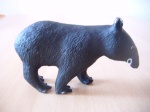
Country/State : Germany
Age : 48
Joined : 2010-12-30
Posts : 45767
 |  Subject: Re: Mathison Museum of Natural History Subject: Re: Mathison Museum of Natural History  Sun Dec 24, 2023 11:15 am Sun Dec 24, 2023 11:15 am | |
| |
|   | | bmathison1972
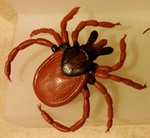
Country/State : Salt Lake City, UT
Age : 52
Joined : 2010-04-13
Posts : 6718
 |  Subject: Re: Mathison Museum of Natural History Subject: Re: Mathison Museum of Natural History  Sun Dec 24, 2023 2:48 pm Sun Dec 24, 2023 2:48 pm | |
| Species: Scytodes thoracica (Latreille, 1802) Common name(s): spitting spider About the Figure: Manufacturer: Club Earth Series: Spiders to Go Year of Production: unknown Size/Scale: Body length (exclusive of appendages) approximately 2.5 cm for a scale of 7:1-4.5:1 Frequency of species in toy/figure form (at time of posting): Very rare (see below) Miscellaneous Notes: Figures in the Spiders to Go collection are marked with their common English name on the underside and appear to be influenced by illustrations in the Golden Guide, Spiders and Their Kin by Levi and Levi (I have the 1990 edition). In addition to this figure, there is a set by an unknown manufacturer that was clearly influenced by the Club Earth set (although the sculpts are not direct copies) that includes this species. About the Animal: Geographic distribution: Cosmopolitan; it is unknown which populations are native and which are introduced throughout its range, although it has been proposed that it originated in the Mediterranean Habitat: Temperate forests, yards, gardens, human habitations; in urban and suburban areas, often found inside houses and other buildings, especially in dark corners, cellars, cupboards, and closets Diet: Insects and other arachnids IUCN Status (at time of posting): Not Evaluated Miscellaneous Notes: Scytodes thoracica is a nocturnal wanderer, and does not build webs. As its common name suggests, it uses silk from glands in its cephalothorax to immobilize prey. When a spider encounters potential prey, it orients itself towards the prey and slowly taps its front legs until the prey is centered between them. It then spits a string of a gluey, venomous substance at the prey, covering it in several parallel, overlapping bands. The material can travel at a rate of up to 28 m/s and the pattern of the bands is produced as the spider lifts its chelicerae and oscillates its fangs during expulsion. The spider then quickly approaches its prey and uses its front two pairs of legs to further entangle the prey in the drying glue, silk, and venom. The venomous glue paralyzes the prey. Once dry, the spider bites its prey, injecting a venom that liquifies its tissues. It then grooms its first two sets of legs, cleaning any remaining glue, before consuming the prey. [You must be registered and logged in to see this image.] |
|   | | bmathison1972

Country/State : Salt Lake City, UT
Age : 52
Joined : 2010-04-13
Posts : 6718
 |  Subject: Re: Mathison Museum of Natural History Subject: Re: Mathison Museum of Natural History  Mon Dec 25, 2023 1:01 pm Mon Dec 25, 2023 1:01 pm | |
| Species: Tliltocatl vagans (Ausserer, 1875) Common name(s): Mexican red rump tarantula About the Figure: Manufacturer: Furuta Series: Chocoegg Funny Animals Series 1 Year of Production: 2002 Size/Scale: Body length (excluding appendages) approximately 2.5 cm for a scale of 1:2-1:3 Frequency of species in toy/figure form (at time of posting): Unique Miscellaneous Notes: Being one of the original Chocoegg figures, some assembly is required. This figure was marketed as Brachypelma vagans, before the description of Tliltocatl in 2020 (see below). About the Animal: Geographic distribution: Central America (Yucatán Peninsula of southeastern Mexico, Belize, Guatemala); naturalized in Florida Habitat: Tropical dry forest, dry scrubland, suburban areas; fossorial Diet: Insects, arachnids, small reptiles IUCN Status (at time of posting): Least Concern Miscellaneous Notes: In 2020, Tliltocatl was described to accommodate Brachypelma albopilosum, B. epicureanum, B. kahlenbergi, B. sabulosum, B. schroederi, B. vagans, and B. verdezi based on both molecular analysis of CO1 gene and morphologic features, most notably color patters of the legs and cephalothorax and the structure of the genitalia in both sexes. [You must be registered and logged in to see this image.] |
|   | | widukind

Country/State : Germany
Age : 48
Joined : 2010-12-30
Posts : 45767
 |  Subject: Re: Mathison Museum of Natural History Subject: Re: Mathison Museum of Natural History  Tue Dec 26, 2023 10:25 am Tue Dec 26, 2023 10:25 am | |
| |
|   | | bmathison1972

Country/State : Salt Lake City, UT
Age : 52
Joined : 2010-04-13
Posts : 6718
 |  Subject: Re: Mathison Museum of Natural History Subject: Re: Mathison Museum of Natural History  Tue Dec 26, 2023 1:45 pm Tue Dec 26, 2023 1:45 pm | |
| Species: Heterodontus japonicus Miklouho-Maclay & Macleay, 1884 Common name(s): Japanese bullhead shark About the Figure: Manufacturer: Epoch Series: Earth Life Journey - Shark and Stingray Figure Collection Year of Production: unknown Size/Scale: Body length approximately 5.5 cm for a scale of 1:21.8 for a maximum-sized specimen Frequency of species in toy/figure form (at time of posting): Rare Miscellaneous Notes: The shark is removable from its base. Heterodontus japonicus has been made a handful of times, almost all by Japanese manufacturers. Others I am familiar with include those by Eikoh (2020), Colorata (2004), and For Corporation (2021). About the Animal: Geographic distribution: Northwest Pacific (Japan, Taiwan, China, Korean Peninsula) Habitat: Demersal, usually over rocky bottoms and kelp beds; at depths of 6-100 meters (usual range 6-37 meters) Diet: Small fish, benthic marine invertebrates IUCN Status (at time of posting): Least Concern Miscellaneous Notes: Heterodontus japonicus is a slow-moving predator that hunts for prey by 'walking' on the sea floor with alternating motions of its pectoral and pelvic fins. [You must be registered and logged in to see this image.] |
|   | | widukind

Country/State : Germany
Age : 48
Joined : 2010-12-30
Posts : 45767
 |  Subject: Re: Mathison Museum of Natural History Subject: Re: Mathison Museum of Natural History  Wed Dec 27, 2023 10:00 am Wed Dec 27, 2023 10:00 am | |
| |
|   | | bmathison1972

Country/State : Salt Lake City, UT
Age : 52
Joined : 2010-04-13
Posts : 6718
 |  Subject: Re: Mathison Museum of Natural History Subject: Re: Mathison Museum of Natural History  Wed Dec 27, 2023 2:37 pm Wed Dec 27, 2023 2:37 pm | |
| Species: Bradypus variegatus Schinz, 1825 Common name(s): brown-throated sloth; brown-throated three-toed sloth About the Figure: Manufacturer: Papo Series: Wild Animals Year of Production: 2017 Size/Scale: Scale difficult to calculate because of its pose, but the body length comes to approximately 7.2 cm for a scale of 1:5.8-1:11.1 Frequency of species in toy/figure form (at time of posting): Uncommon Miscellaneous Notes: No sloth species are commonly made, but this is the most commonly made of those that are, at least among extant taxa. This figure represents a female with young (see inset); in 2020 CollectA produced a nice male, although it scales a bit larger than this female. About the Animal: Geographic distribution: Central America and South America, from Honduras to southern Brazil and eastern Peru, absent north and east of the Amazon and Rio Negro rivers Habitat: Tropical rainforest, tropical dry forest, subtropical lowlands, swamps; arboreal, usually in the canopy Diet: Leaves, flowers, fruits of a variety of plants, especially Cecropia IUCN Status (at time of posting): Least Concern Miscellaneous Notes: Bradypus variegatus has a unique relationship with the moth, Cryptoses choloepi. Adult moths live among the fur of the sloths. When the sloths descend to the forest floor once a week to defecate, the moths leave the sloths and lay their eggs in the sloths' dung. The relationship is considered phoretic, as the moths are using the sloths for transportation, although it has been suggested that the moths help promote the growth of algae on the sloth's fur, hence enhancing its camouflage. [You must be registered and logged in to see this image.] |
|   | | Roger
Admin
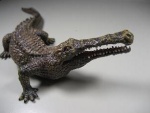
Country/State : Portugal
Age : 50
Joined : 2010-08-20
Posts : 35844
 |  Subject: Re: Mathison Museum of Natural History Subject: Re: Mathison Museum of Natural History  Wed Dec 27, 2023 9:50 pm Wed Dec 27, 2023 9:50 pm | |
| One moth's trash is another moth's treasure! I didn't know that about sloth moths and I find it really interesting. |
|   | | widukind

Country/State : Germany
Age : 48
Joined : 2010-12-30
Posts : 45767
 |  Subject: Re: Mathison Museum of Natural History Subject: Re: Mathison Museum of Natural History  Thu Dec 28, 2023 9:32 am Thu Dec 28, 2023 9:32 am | |
| |
|   | | bmathison1972

Country/State : Salt Lake City, UT
Age : 52
Joined : 2010-04-13
Posts : 6718
 |  Subject: Re: Mathison Museum of Natural History Subject: Re: Mathison Museum of Natural History  Thu Dec 28, 2023 1:57 pm Thu Dec 28, 2023 1:57 pm | |
| Species: Pelodiscus sinensis (Wiegmann, 1835) Common name(s): Chinese softshell turtle About the Figure: Manufacturer: Takara Tomy A.R.T.S. Series: Primary Turtles in Colour Year of Production: unknown Size/Scale: Carapace length approximately 3.5 cm for a scale of 1:5.1-1:9.4 depending on the sex Frequency of species in toy/figure form (at time of posting): Rare Miscellaneous Notes: This sculpt was first produced by Yujin in 2002, before Takara acquired the various 'Pictorial Book' and 'Primary Colour' series. About the Animal: Geographic distribution: East Asia; introduced to other localities in Asia, Brazil, Hawaii, and Europe (see below) Habitat: Freshwater ponds, lakes, swamps, and slow-moving rivers, canals, and creeks Diet: Fish, aquatic invertebrates IUCN Status (at time of posting): Vulnerable Miscellaneous Notes: Determining the original native range of P. sinensis is challenging, as it has been moved around and introduced throughout East and Southeast Asia for its use as food and in traditional medicine. It is believed to be native to several regions of China and Taiwan. Populations in Asia that are believed to be from introductions include those in Japan, Korean Peninsula, Laos, Vietnam, Thailand, Philippines, Malaysia, Indonesia, and East Timor. Other introductions around the world include Iran, Brazil, Guam, Northern Mariana Islands, Hawaii, and several countries in Europe, including Spain, Bosnia, Herzegovina, Croatia, Slovenia, Germany, and Switzerland (although it is uncertain how many of these introductions in Europe are established). [You must be registered and logged in to see this image.] |
|   | | widukind

Country/State : Germany
Age : 48
Joined : 2010-12-30
Posts : 45767
 |  Subject: Re: Mathison Museum of Natural History Subject: Re: Mathison Museum of Natural History  Fri Dec 29, 2023 9:22 am Fri Dec 29, 2023 9:22 am | |
| |
|   | | bmathison1972

Country/State : Salt Lake City, UT
Age : 52
Joined : 2010-04-13
Posts : 6718
 |  Subject: Re: Mathison Museum of Natural History Subject: Re: Mathison Museum of Natural History  Fri Dec 29, 2023 2:08 pm Fri Dec 29, 2023 2:08 pm | |
| Species: Lycosa tarantula (Linnaeus, 1758) Common name(s): European wolf spider; tarantula About the Figure: Manufacturer: Club Earth Series: Spiders to Go Year of Production: unknown Size/Scale: Body length (excluding appendages) approximately 2.7 cm, within scale 1:1 for a female specimen Frequency of species in toy/figure form (at time of posting): Uncommon Miscellaneous Notes: This is the second time we've seen L. tarantula in the Museum. Figures in the Spiders to Go collection are marked with their common name on the underside. This figure is marked 'tarantula' which one might assume represents a member of the family Theraphosidae. However, in Europe 'tarantula' is a vernacular name for their common wolf spider, which is in the family Lycosidae. The arrangement of the eyes on this figure, while simplified, appears to have been based on a member of the family Lycosidae (eye arrangement usually defines spiders at the family level). About the Animal: Geographic distribution: Mediterranean Europe, North Africa, Middle East Habitat: Scrubland, deserts, fields, suburban areas; usually in rocky places with sparse vegetation cover Diet: Insects and other arthropods IUCN Status (at time of posting): Not Evaluated Miscellaneous Notes: Lycosa tarantula exhibits some parental care. Females carry their egg sacs around attached to their spinnerets. After hatching, the spiderlings ride around on the abdomen of their mother until they are mature enough to survive on their own. [You must be registered and logged in to see this image.] |
|   | | rogerpgvg
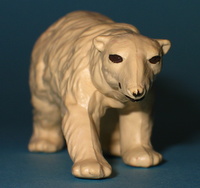
Country/State : UK
Age : 54
Joined : 2016-04-29
Posts : 3897
 |  Subject: Re: Mathison Museum of Natural History Subject: Re: Mathison Museum of Natural History  Fri Dec 29, 2023 2:09 pm Fri Dec 29, 2023 2:09 pm | |
| Great photo, it looks as if the turtle is looking for food while floating. |
|   | | Caracal
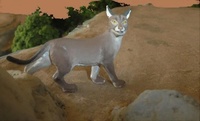
Country/State : France
Age : 65
Joined : 2018-10-24
Posts : 7258
 |  Subject: Re: Mathison Museum of Natural History Subject: Re: Mathison Museum of Natural History  Fri Dec 29, 2023 6:10 pm Fri Dec 29, 2023 6:10 pm | |
| same species than the Papo one? They look different..  |
|   | | bmathison1972

Country/State : Salt Lake City, UT
Age : 52
Joined : 2010-04-13
Posts : 6718
 |  Subject: Re: Mathison Museum of Natural History Subject: Re: Mathison Museum of Natural History  Sat Dec 30, 2023 1:25 pm Sat Dec 30, 2023 1:25 pm | |
| Species: Equus ferus przewalskii (Polyakov, 1881) Common name(s): Przewalski's horse; takhi; Dzungarian horse About the Figure: Manufacturer: Safari Ltd. Series: Winner's Circle Horses Year of Production: 2018 Size/Scale: Height at shoulders (withers) approximately 7.0 cm for a scale of 1:18.6-1:21.4 Frequency of subspecies in toy/figure form (at time of posting): Rare Miscellaneous Notes: This is one of three go-to figures of Przewalski's horse, the others being by Schleich (2007) and CollectA (2013). They each have their own qualities that make them nice and their own quirks which might turn people off from them. For example, some consider today's Safari model too stiff and geometric in the face. Me personally, I don't like the pose of CollectA's and Schleich's seems too stocky. But really you can't go wrong with any of the three. About the Animal: Geographic distribution: Central Asia; today limited to reintroduction areas in China, Mongolia, and Kazakhstan Habitat: Steppes, dry grasslands, deserts Diet: Grasses; also leaves and fruit of shrubby trees IUCN Status (at time of posting): Endangered Miscellaneous Notes: There have been multiple molecular studies over the years trying to elucidate the origins of Przewalski's horse. Some of the earliest studies suggested that neither Przewalski's horse nor the modern domestic horse are ancestors to one another, and the split between the two occurred about 45,000 years ago, roughly 40,000 years before the domestication of horses by the Botai culture in Central Asia. A 2009 molecular study placed Przewalski's horse within the domesticated horses while a 2011 study suggested the two diverged about 160,000 years ago and a 2013 study suggested they diverged 38,000-72,000 years ago. A 2018 study suggested the Botai and Przewalski's horses are part of the same lineage and that Przewalski's horses are feral descendants of domesticated Botai horses. One of the latest studies, in 2021, supported the original theory that Przewalski's horses are descended from a population that was never domesticated and that the horses associated with the Botai culture were never fully domesticated either. Either way, if the Botai did domesticate horses, it was a separate event from the domestication of the modern E. ferus caballus. [You must be registered and logged in to see this image.] |
|   | | Roger
Admin

Country/State : Portugal
Age : 50
Joined : 2010-08-20
Posts : 35844
 |  Subject: Re: Mathison Museum of Natural History Subject: Re: Mathison Museum of Natural History  Sat Dec 30, 2023 3:33 pm Sat Dec 30, 2023 3:33 pm | |
| True, it is a tough choice. It was easy for me because when the Safari and CollectA wild horses were released, I already owned the Schleich figure. Yes, the Schleich model is a little chubby as usual for the brand and as it is the zebra which served as base for the Schleich model. Nevertheless, it is a very good figure and I also like these two newer renditions although not enough to replace my model. I believe it could be done better. |
|   | | Kikimalou
Admin
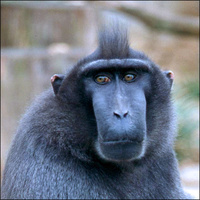
Country/State : Lille, FRANCE
Age : 60
Joined : 2010-04-01
Posts : 21184
 |  Subject: Re: Mathison Museum of Natural History Subject: Re: Mathison Museum of Natural History  Sat Dec 30, 2023 3:38 pm Sat Dec 30, 2023 3:38 pm | |
| - Roger wrote:
- True, it is a tough choice. It was easy for me because when the Safari and CollectA wild horses were released, I already owned the Schleich figure. Yes, the Schleich model is a little chubby as usual for the brand and as it is the zebra which served as base for the Schleich model. Nevertheless, it is a very good figure and I also like these two newer renditions although not enough to replace my model. I believe it could be done better.
The same for me  |
|   | | widukind

Country/State : Germany
Age : 48
Joined : 2010-12-30
Posts : 45767
 |  Subject: Re: Mathison Museum of Natural History Subject: Re: Mathison Museum of Natural History  Sat Dec 30, 2023 4:14 pm Sat Dec 30, 2023 4:14 pm | |
| |
|   | | Caracal

Country/State : France
Age : 65
Joined : 2018-10-24
Posts : 7258
 |  Subject: Re: Mathison Museum of Natural History Subject: Re: Mathison Museum of Natural History  Sat Dec 30, 2023 6:09 pm Sat Dec 30, 2023 6:09 pm | |
| According to genetician Ludovic Orlando ( La conquête du cheval, une histoire génétique, Odlile Jacob ed. 2023), Botaï horses were domestic breed since Botaï people were drinking their milk and the young horses are far less numerous than the adult ones at the contrary of usual hunting remains. According to him and his genetic analysis, they are from the same lineage than the Przewalsky horses. He called that lineage DOM1 (for domestic first lineage). All the domestic horses, all over the world, even the konik, belong to another lineage, DOM2 originated to Caspian area which has been domestcated 4200 years ago. The european lineages (tarpan and iberic wild horses) did not have domestic offsprings. So that it seems that Przewalski horses can be regarded as feral horses from another domestic lineage! I don't have this Safari ltd one because I already have the Schleich and CollectA ones but it is a good model very well displayed!   |
|   | | bmathison1972

Country/State : Salt Lake City, UT
Age : 52
Joined : 2010-04-13
Posts : 6718
 |  Subject: Re: Mathison Museum of Natural History Subject: Re: Mathison Museum of Natural History  Sun Dec 31, 2023 2:01 pm Sun Dec 31, 2023 2:01 pm | |
| Species: Oophaga histrionica (Berthold, 1845) Common name(s): harlequin poison frog About the Figure: Manufacturer: Wing Mau/Club Earth Series: Poison Frogs Alive! Year of Production: unknown Size/Scale: Snout-to-vent length approximately 4.0 cm for a scale of 1.3:1 Frequency of species in toy/figure form (at time of posting): Rare Miscellaneous Notes: Wing Mau also used this sculpt for Club Earth's Frogs to Go collection and their own independent release. Oophaga histrionica is highly variable in its color and other morphotypes have been produced by Kitan Club/Ikimon and Bullyland. About the Animal: Geographic distribution: South America (Ecuador, Colombia) Habitat: Tropical rainforest; usually on the ground among leaf litter and dead branches Diet: Small invertebrates IUCN Status (at time of posting): Critically Endangered Miscellaneous Notes: Oophaga histrionica produces histrionicotoxins, a kind of cardiotoxin, which moderate to highly toxic compounds act as potent noncompetitive antagonists of nicotinic acetylcholine receptors, binding to a regulatory site on the delta subunit of the ion channel complex. [You must be registered and logged in to see this image.] |
|   | | widukind

Country/State : Germany
Age : 48
Joined : 2010-12-30
Posts : 45767
 |  Subject: Re: Mathison Museum of Natural History Subject: Re: Mathison Museum of Natural History  Sun Dec 31, 2023 2:08 pm Sun Dec 31, 2023 2:08 pm | |
| |
|   | | Jill

Country/State : USA
Age : 39
Joined : 2021-04-13
Posts : 2350
 |  Subject: Re: Mathison Museum of Natural History Subject: Re: Mathison Museum of Natural History  Mon Jan 01, 2024 2:17 am Mon Jan 01, 2024 2:17 am | |
| Oh wow that softshell, what a beautiful model! And love the prezewalski horse. I do think it feels a little stylized, but I think in a good way. |
|   | | bmathison1972

Country/State : Salt Lake City, UT
Age : 52
Joined : 2010-04-13
Posts : 6718
 |  Subject: Re: Mathison Museum of Natural History Subject: Re: Mathison Museum of Natural History  Mon Jan 01, 2024 1:13 pm Mon Jan 01, 2024 1:13 pm | |
| Species: Trapania naeva Gosliner & Fahey, 2008 Common name(s): black-and-white sea slug About the Figure: Manufacturer: Kitan Club Series: Nature Techni Colour - Sea Slugs Year of Production: 2011 Size/Scale: Body length approximately 3.5 cm for a scale of 7:1-5:1 (see below) Frequency of species in toy/figure form (at time of posting): Very rare Miscellaneous Notes: Figures in this set were sold as both straps and magnets. Yujin produced this species before its formal description in 2008, only marketing the figure as Trapania. The scale above is calculated based on the formal description of the species by Gosliner and Fahey, who indicate living animals range from 5-7 mm long. Websites devoted to sea slugs however say thay can be up to 3.5 cm in length, which if true would put this figure in scale 1:1 for a large specimen. About the Animal: Geographic distribution: Indo-Pacific Habitat: Coral reefs; at depths of 12-18 meters Diet: Entoproctans growing on sponges and other living substrates IUCN Status (at time of posting): Not Evaluated Miscellaneous Notes: Not much has been documented on the biology of this species. Despite only being formally described in 2008, the dorid has a very wide geographic distribution, being found from East Africa (Kenya, Tanzania), Rodrigues Island, and the Maldives to Japan, Indonesia, Fiji, and Northwest Australia. [You must be registered and logged in to see this image.] |
|   | | Caracal

Country/State : France
Age : 65
Joined : 2018-10-24
Posts : 7258
 | |   | | bmathison1972

Country/State : Salt Lake City, UT
Age : 52
Joined : 2010-04-13
Posts : 6718
 |  Subject: Re: Mathison Museum of Natural History Subject: Re: Mathison Museum of Natural History  Tue Jan 02, 2024 12:35 pm Tue Jan 02, 2024 12:35 pm | |
| Species: Andrias japonicus (Temminck, 1836) Common name(s): Japanese giant salamander; ōsanshōuoAbout the Figure: Manufacturer: Kitan Club Series: Nature Techni Colour - Newts and Giant Salamander Year of Production: 2015 Size/Scale: Snout-to-vent length approximately 6.2 cm for a scale of 1:3.2-1:14.5 Frequency of species in toy/figure form (at time of posting): Uncommon Miscellaneous Notes: This figure was sold as both a magnet and a strap figure. While generally uncommonly made, there are several options of this species available by Japanese manufacturers, including two additional models by Kitan Club as well as some by Kaiyodo (at least 5 different sculpts), Epoch, Re-Ment, Bandai, and Eikoh, among others. About the Animal: Geographic distribution: Southwestern Japan (western Honshu, Shikoku, northeastern Kyushu) Habitat: Freshwater rivers, streams, creeks; usually in cool, clear, swift waters in granite and schist regions Diet: Fish, amphibians, freshwater invertebrates IUCN Status (at time of posting): Vulnerable Miscellaneous Notes: Andrias japonicus is entirely aquatic and lacks gills as an adult. As such, it requires oxygen-rich waters in which to live. It has the ability to absorb oxygen directly through its skin, but it will also periodically take gulps of air but without fully venturing onto land. [You must be registered and logged in to see this image.]
Last edited by bmathison1972 on Tue Jan 02, 2024 1:20 pm; edited 1 time in total |
|   | | Sponsored content
 |  Subject: Re: Mathison Museum of Natural History Subject: Re: Mathison Museum of Natural History  | |
| |
|   | | | | Mathison Museum of Natural History |  |
|
Similar topics |  |
|
| | Permissions in this forum: | You cannot reply to topics in this forum
| |
| |
| |
